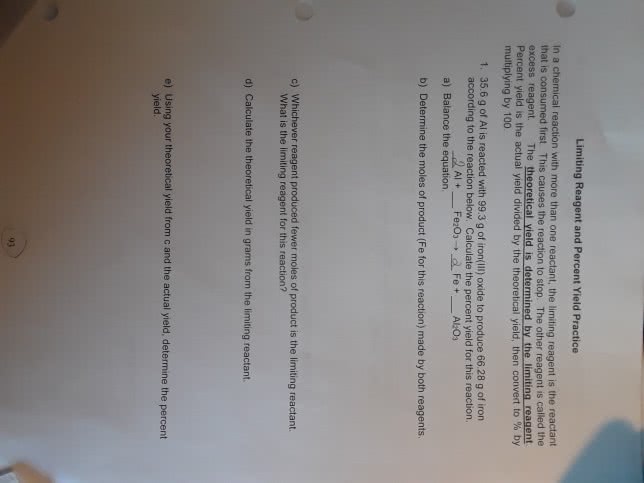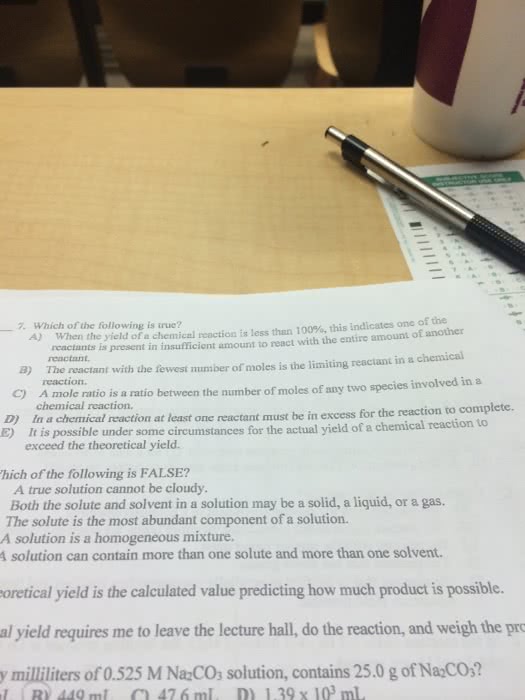CH 101 Study Guide - Midterm Guide: Formula Unit, Heat Capacity, Equivalence Point
Document Summary
Limiting reactant- the reactant that limits the amount of product in a chemical reaction: makes the least amount of product, completely consumed in a chemical reaction. Theoretical yield- the amount of product that can be made in a chemical reaction based on the amount of limiting reactant. Actual yield- the amount of product actually produced by a chemical reaction. Percent yield- the percentage of the theoretical yield that was actually attained, as the ration of the actual yield to the theoretical yield. Combustion reaction- involves the reaction of a substance with oxygen gas to form one or more oxygen containing compounds, often including water: most common products are co2 and h2o. Molarity (m)- the amount of solute (in moles) divided by the volume of solution (in liters: solute- the minor component. What is being dissolved: solvent- the major component of the mixture. What is doing the dissolving: aqueous solution- a solution in which water is the solvent.



